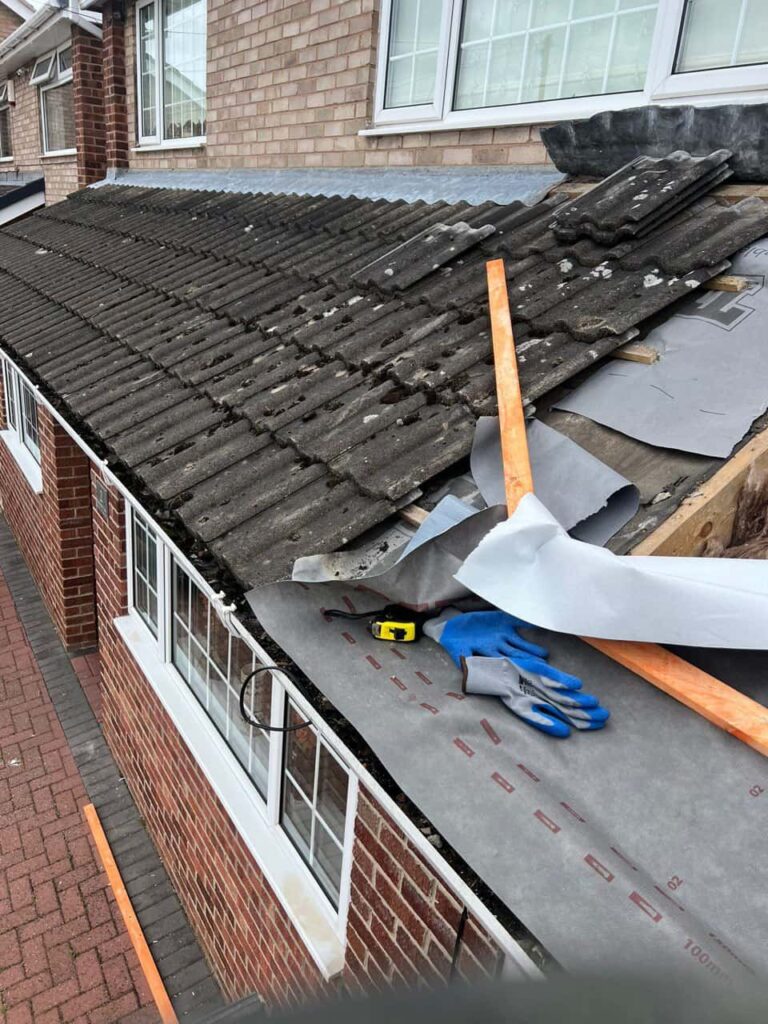Introduction
Felt roofs have long been a popular choice for flat and low-pitched roofs in the UK. Affordable, durable, and versatile, they provide reliable protection for garages, extensions, sheds, and commercial buildings. However, with the unpredictable British weather and particularly harsh winters, many homeowners wonder whether felt roofing can stand up to prolonged cold conditions. At Sutton in Ashfield Roofing Repairs, we often advise customers on the performance of felt roofs in different climates and how to maximise their lifespan.
How Felt Roofs Perform in Cold Weather
Felt roofs are designed to withstand the elements, but cold climates do pose unique challenges. The material can contract in freezing temperatures, making it more susceptible to cracking if it has already aged or been poorly installed. However, modern felt roofing systems use advanced bitumen-based materials that are far more resistant to frost and thermal movement than older versions.
Benefits of Felt Roofs in Cold Climates
When correctly installed and maintained, felt roofs can perform very well in cold conditions. Some key advantages include:
- Waterproofing ability – Felt roofing creates a strong barrier against rain, snow, and frost, keeping your property dry.
- Flexibility of material – High-quality felt expands and contracts with temperature changes, reducing the risk of splits.
- Protective layers – Multi-layered felt systems provide insulation as well as protection, which can help regulate indoor temperatures.
- Ease of repair – If damage does occur due to cold weather, felt roofs are relatively straightforward to patch and restore.
Common Cold Climate Issues with Felt Roofs
Despite their benefits, cold climates can expose weaknesses in a felt roof. Typical problems include:
- Cracking or blistering – Low temperatures can harden old or poor-quality felt, leading to cracks and water ingress.
- Pooling water – Snow and ice can create temporary ponding, which may weaken the surface if drainage is poor.
- Shrinkage – Repeated freezing and thawing cycles may cause sections of the felt to pull away from edges or joints.
How to Protect a Felt Roof in Winter
Homeowners in Sutton in Ashfield can extend the life of their felt roofs by taking proactive measures:
- Arrange regular inspections with a roofing specialist to spot early signs of wear.
- Keep gutters and outlets clear to prevent ice build-up and water pooling.
- Remove heavy snow accumulation to reduce excess weight and pressure on the roof.
- Ensure the roof has been professionally installed with the correct layering and high-quality felt materials.
Why Professional Installation Matters
A felt roof’s performance in cold climates is strongly linked to the quality of installation. At Sutton in Ashfield Roofing Repairs, we understand the importance of correct layering, sealing, and drainage to ensure felt roofs withstand the challenges of winter. A professionally installed felt roof can last many years and provide reliable protection, even through freezing temperatures and heavy snowfall.
Conclusion
Felt roofs can work extremely well in cold climates when they are made from modern, durable materials and installed to a high standard. With the right care and attention, they can withstand the challenges of frost, snow, and ice while continuing to protect your property. For expert advice, inspections, and felt roof repairs, Sutton in Ashfield Roofing Repairs is here to help homeowners in Sutton in Ashfield, Nottinghamshire maintain strong and weather-resistant roofs.
Call us on: 01623 708 985
Click here to find out more about Sutton in Ashfield Roofing Repairs
Click here to complete our contact form and see how we can help with your roofing needs.

